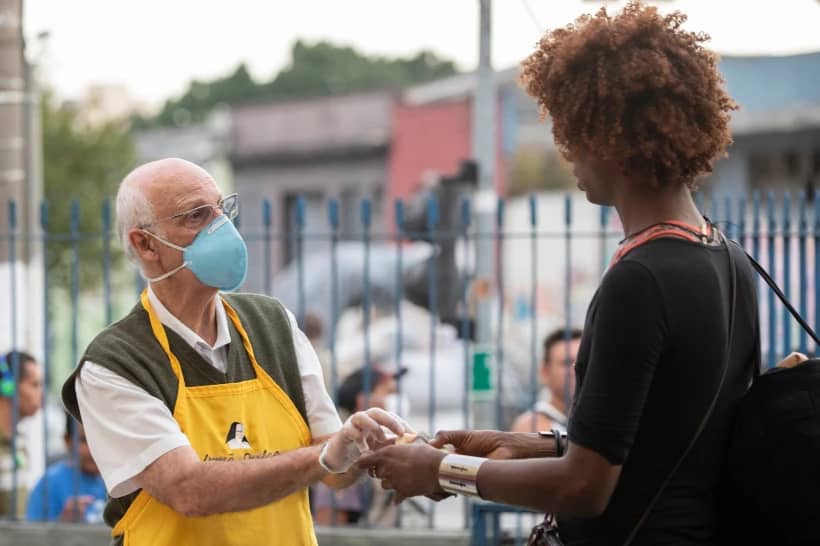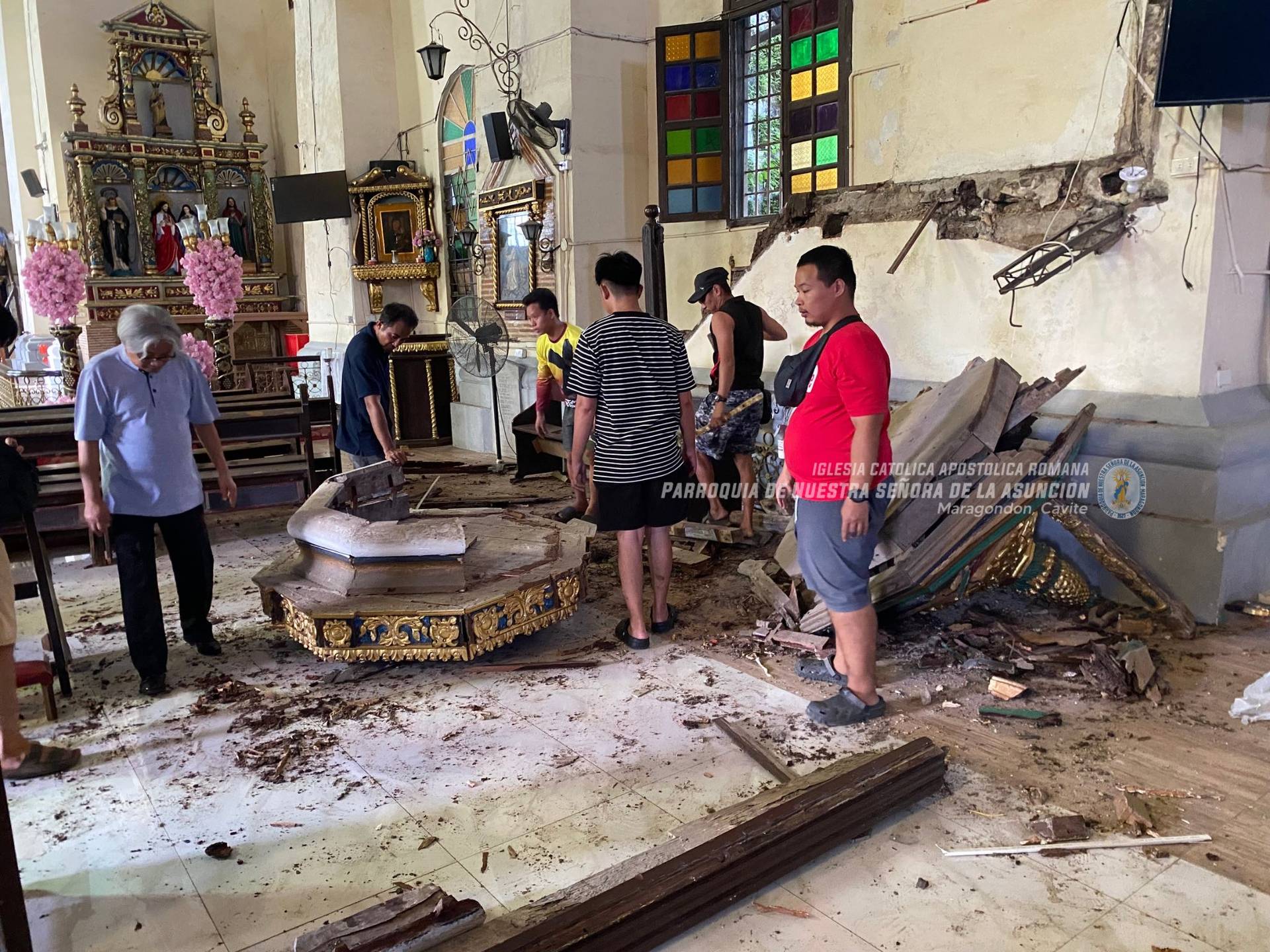ANAHEIM, California – In his debut at America’s largest annual Catholic gathering, one of the rising stars of the U.S. hierarchy warned that full recovery from the clerical abuse scandals, including a new style of leadership in the Church, will be a “generational” task.
“We’ll be at this for a while,” said Bishop Frank Caggiano of Bridgeport, Connecticut, who made a splash at last fall’s Synod of Bishops in Rome with his blunt, forceful language on the abuse crisis.
“We have become a society that sees everything in terms of power, as an authority or force over you, rather than a service in support of you, which is what the Lord defines authority and power,” Caggiano said in a March 22 interview with Crux.
“That’s going to be a generational amount of work to get to,” he said. “You’re going to need the few saints to lead the rest of us to figure out how to do it.”
Caggiano was speaking on the margins of the Los Angeles Religious Education Congress, an annual gathering held at the Anaheim Convention Center that regularly attracts in excess of 30,000 youth, catechists, religion teachers and other leaders in the Church.
The Bridgeport prelate, who’s originally from Brooklyn, was on hand to deliver two talks on Friday, one to youth and another to catechists, before taking a red-eye flight back to his diocese on Saturday to preside over a confirmation ceremony.
In his conversation with Crux, Caggiano stressed the need not just for improved structures and procedures to combat clerical abuse, but also “spiritual conversion.”
“If the sexual abuse crisis is, in part, an abuse of power, there is no mandate, procedure or process on earth that can avoid an abuse of power unless there’s a change of heart, a change in priority, a change in the way we exercise leadership, and the spirit with which you exercise leadership,” he said.
“I mean episcopal leadership, pastoral, lay leadership, leadership in families … there has to be a change,” Caggiano said.
Right now, Caggiano said, reform is happening in fits and starts among communities that foster both hope and joy in the Christian life despite the pain, which he described as characteristic of how the Church works.
“Reforming the Church never happens when everyone does it simultaneously,” he said. “Reform always starts in certain places that begin to grow, whether it’s in the Patristic era, the Dark Ages, the Middle Ages, the Reformation, the same is happening here.”
“There are some places that are ahead, some places in the country that are ahead, some communities that are ahead,” Caggianno said. “The hope is that as they begin to heal and show a light, everyone else will begin to follow their example. That’s how renewal occurs.”
“For it to happen everyplace all at the same time, in the same way, never really works that way in the Church,” he said.
In terms of a spiritual response, Caggiano emphasized the centrality of the cross.
“It’s the cross that is both the symbol of our salvation and the hope to forgive sin, eventually to heal even the wounds of sin,” he said.
“We live in a time when many people have been wounded by the sins of those who were entrusted to care for them. They’re wounded, and they’re betrayed,” Caggiano said. “The cross is about a wounded Christ, a betrayed Christ, but a Christ who’s triumphant, a Christ who ultimately breaks the chains of sin and death.”
It’s the cross, he said, that justifies hope for recovery.
“When you stand before the cross, there’s no wound, there’s no hurt, there’s no suffering as profound as it can be, that cannot find healing,” Caggiano said. “Before the cross there’s no reason to give up hope, because the victory’s already ours.”
“We need to go back to that … we’ve got to get back to the basics because the moment demands it,” he said.
“It seems to me that in this period of life we’re living, in which there’s a lot of darkness but also the signs of the beginnings of real change and hope and grace and light, the cross is going to be the path we have to walk,” Caggiano said.
In that context, Caggiano advised those who teach the faith to focus on the core Christian proclamation, known by the Greek term kerygma.
“A catechist can get involved in a lot of stuff, but the kerygma is one sentence: ‘Christ has died, Christ is risen, Christ will come again,’” he said.
Acknowledging the anger many Catholics feel about the scandals, Caggiano said in some ways it’s a positive force.
“The anger is a righteous anger most of the time, because you’re seeing justice and that should not be diminished. Even Jesus was angry in the temple,” he said.
“Anger gives birth to two daughters, courage and hope – courage to change what’s wrong, and hope to believe it can be better,” Caggiano said. “I think the anger itself can be a gift, but you can’t stay there forever. You’ve got to move on to the courage and the hope, and that’s the cross in my mind.”
The 59-year-old prelate, who routinely figures on informal handicapping lists for bigger jobs someday, said the crisis has forced the Church to be more honest about itself.
“In my mind, we have veneers in life. The modern world is filled with them, and things are not what they appear to be,” he said.
“The abuse crisis, because it is so profound, so ugly, so humiliating, there are no veneers we can stand behind anymore,” Caggiano said. “It’s just the truth. When you do that, you can really begin to heal, you can begin to change.”
That part is what we bring to the equation. What they bring is everything else I’ve described, and then you can see real transformation.
He also emphasized the need to engage youth.
“There’s a tremendous sense of honesty, there’s a sense of wanting to make a difference, there’s still a tremendous sense of generosity among young people and young adults,” he said. “There’s also an activism, they know the world is not what it’s meant to be and they want to be able to change it for the better.”
“But in an age in which it’s only about what I want, we also have to help them understand that to truly unleash that power, it has to be in dialogue with a truth bigger than themselves – a truth from which they have nothing to fear, just like the glove has nothing to fear from the hand,” Caggiano said.
After his first experience of the Los Angeles Religious Education Congress, which dates to 1967, Caggiano described it as a “phenomenon.”
“This is a national religious congress, not an L.A. religious congress,” he said.
“Here there’s a microcosm of the whole Church. You have those who are very much in the apologetic mode, teaching the faith and the truth of the faith. There are others who are much more in the social justice and social gospel mode. You have others who are more into the liturgical and spirituality side,” Caggiano said.
“In a sense, it’s like highlighting the different pieces of who we are,” he said. “I think there’s something for everybody.”

















